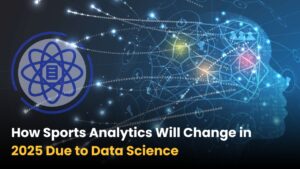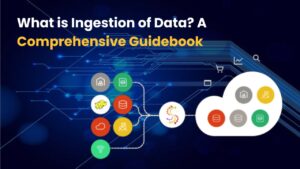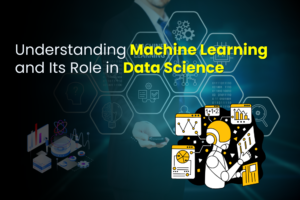Data is the new oil in the current digital era. However, in order to extract value, raw data must be gathered, purified, and processed, much like crude oil. Here’s when data ingestion is useful. It is the foundational step in any data pipeline, determining the quality, efficiency, and scalability of downstream processes like data analytics, machine learning, and business intelligence.
In this comprehensive guidebook, we will explore what data ingestion is, why it matters, the different types, methods, challenges, tools, and best practices involved in creating an effective data ingestion strategy.
What is data ingestion?
The act of gathering, importing, moving, and processing data from various sources into a centralized storage system—such as an analytics platform, data warehouse, or data lake—is known as data ingestion. This process enables organizations to bring together structured, semi-structured, and unstructured data for further analysis, transformation, and decision-making. It’s often the first step in building a data pipeline—the set of processes that move data from source to destination.
Why is data ingestion important?
In contemporary data-driven ecosystems, data intake is essential:
- Centralized Access: It unifies data from multiple sources into one platform.
- Real-Time Insights: Enables real-time decision-making by providing up-to-date information.
- Scalability: Supports large-scale data processing across distributed systems.
- Automation reduces the need for manual data handling and improves operational efficiency.
- Foundation for Analytics: Data ingestion is the gateway to big data analytics, reporting, and machine learning.
Get Certified in Data Science from Pune’s Top Trainers—Apply Today!
Types of Data Ingestion
Three main categories may be used to classify data intake processes:
- Batch Ingestion:
Definition: Data is gathered and sent in portions at predetermined times.
Use Cases: Daily reporting, ETL pipelines, data warehousing.
Pros:
- Efficient for large data volumes.
- Easy to schedule and maintain.
Cons:
- Not suitable for time-sensitive data.
- Delayed processing.
2. Real-Time (Streaming) Ingestion
Definition: Data is ingested continuously as it is generated.
Use Cases: Fraud detection, monitoring, clickstream analysis.
Pros:
- Instant data availability.
- Supports reactive systems.
Cons:
- More complex architecture.
- Higher infrastructure costs.
3. Lambda Architecture (Hybrid Ingestion)
Definition: Combines batch and real-time ingestion to balance latency and throughput.
Use Cases: When both historical and real-time insights are required.
Pros:
- Flexibility and completeness.
Cons:
- More complex implementation and maintenance.
Methods of Data Ingestion
Data can be ingested using various methods depending on the source, format, and target system:
1. ETL (Extract, Transform, Load)
- Data is placed into a data warehouse after being retrieved from sources and formatted as needed.
- Best for structured data and historical analysis.
2. ELT (Extract, Load, Transform)
- Data is loaded into the destination first, and then it is modified.
- Common in cloud-based environments (e.g., Snowflake, BigQuery).
3. CDC (Change Data Capture)
- Only changes (inserts, updates, deletes) from source systems are captured and ingested.
- Efficient for real-time syncing.
4. API-Based Ingestion
- APIs pull data from web services or applications (like CRM or ERP systems).
- Supports structured and semi-structured data.
5. File-Based Ingestion
- Data is imported from logs, CSV, JSON, and XML files.
- Suitable for legacy systems and data dumps.
6. Agent-Based Ingestion
- Specialized software agents monitor and transfer data from sources (e.g., log forwarders, collectors).
- Often used in monitoring and observability platforms.
Sources of Data Ingestion
Data ingestion systems often integrate with a wide array of data sources:
- Databases: MySQL, PostgreSQL, Oracle, MongoDB, etc.
- Applications: Salesforce, SAP, Google Analytics, etc.
- IoT Devices: Sensors, wearables, connected devices.
- Files and Logs: CSV files, Apache logs, JSON files.
- Message Queues: Kafka, RabbitMQ, AWS Kinesis.
- Web Services: RESTful APIs, SOAP APIs.
Common Data Ingestion Tools
There are several systems and solutions available for managing and automating data ingestion:
| Tool | Description | Best For |
| Apache NiFi | Visual interface for building data flows | Complex workflows, real-time ingestion |
| Apache Kafka | Distributed event streaming platform | High-throughput real-time ingestion |
| Talend | ETL tool with batch and real-time capabilities | Enterprise data integration |
| Fivetran | Managed ELT service | SaaS data ingestion |
| Airbyte | Open-source data integration platform | Modular connectors |
| Informatica | Enterprise-grade data ingestion and transformation | Large enterprises |
| AWS Glue | Serverless ETL service | Cloud-native ingestion |
| Google Dataflow | Real-time and batch processing on GCP | Stream and batch ingestion |
Key Challenges in Data Ingestion
Despite its importance, data ingestion comes with challenges:
1. Data Quality Issues
- Duplicate or corrupted data.
- Inconsistent formats.
- Missing values.
2. Scalability
- Handling petabytes of data with low latency.
- Managing concurrent data streams.
3. Latency
- Delays in ingestion can disrupt real-time analytics.
4. Security and Compliance
Ensuring data encryption, masking, and GDPR compliance.
5. System Integration
Supporting diverse data formats, protocols, and platforms.
6. Error Handling
Managing failures in source systems or pipelines without data loss.
Master AI, ML & Python—Join Our Data Science Classes in Pune Now!
Best Practices for Effective Data Ingestion
1. Automate Wherever Possible
Use orchestration tools to automate ingestion pipelines and error handling.
2. Use Schema Validation
Validate incoming data to detect and fix issues early.
3. Design for Scalability
Make sure your pipeline can expand to accommodate the volume of your data.
4. Monitor and Alert
Implement logging, monitoring, and alerts for ingestion jobs.
5. Ensure Data Governance
Track metadata, lineage, and access controls for ingested data.
6. Minimize Latency
For time-sensitive use cases, choose streaming over batch.
7. Prioritize Security
Particularly for sensitive data, encrypt data both in transit and at rest.
Real-World Use Cases of Data Ingestion
1. E-commerce
Real-time ingestion of user activity data for personalization and recommendations.
2. Finance
Ingesting transaction data to detect fraud in real-time.
3. Healthcare
Batch ingestion of patient records and medical imaging for historical analysis.
4. Telecommunications
Streaming ingestion of network logs for monitoring performance.
5. Social Media Platforms
Handling massive ingestion of user-generated content across various geographies.
Future Trends in Data Ingestion
1. Serverless and Cloud-Native Pipelines
Ingestion with no infrastructure management is now possible thanks to platforms like AWS Glue, GCP Dataflow, and Azure Data Factory.
2. AI-Driven Data Ingestion
Machine learning is being used to auto-correct schema mismatches and detect anomalies.
3. Edge Data Ingestion
With the rise of IoT, data is increasingly being processed and ingested at the edge before being sent to the cloud.
4. Open-Source Dominance
Tools like Airbyte and Apache NiFi are becoming increasingly popular for flexible, community-driven ingestion pipelines.
Conclusion
Data ingestion is more than just moving data from point A to point B—it is the lifeline of modern data infrastructure. Whether you are building a small analytics system or a massive enterprise-scale data lake, understanding the various ingestion strategies, tools, and challenges is essential to designing a robust and efficient pipeline.
By adopting best practices, leveraging the right tools, and aligning ingestion strategies with your business goals, you can unlock the true value of your data—faster, smarter, and more reliably than ever before.
FAQs
1. Are ETL and data intake the same thing?
No, ETL is one of the methods of data ingestion. Data ingestion is the broader process that includes all methods of collecting and moving data into a storage system.
2. Can I ingest unstructured data?
Yes, tools like Apache NiFi and cloud platforms support ingestion of unstructured data like logs, images, or text.
3. What distinguishes data integration from data ingestion?
Data ingestion focuses on collecting and moving data, while integration involves combining and unifying it for meaningful use.
4. Which is better—batch or streaming ingestion?
It depends on your use case. Batch is good for large, less time-sensitive data; streaming is best for real-time needs.






